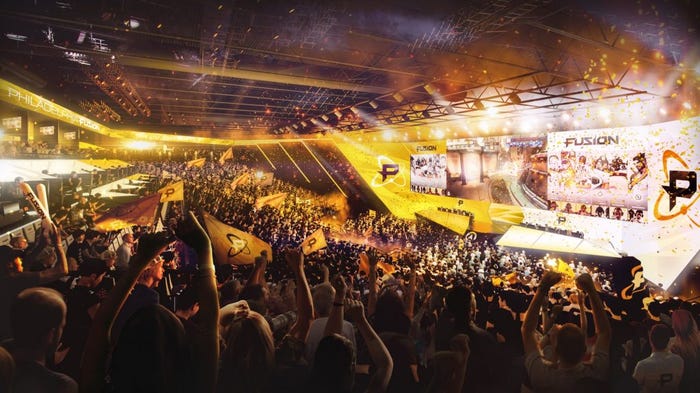Broadband 2020: It's Not Just About Speed — It's About Latency
Faster internet speed is soooo last decade. You should be selling low latency.
January 9, 2020


Craig Leddy
By Craig Leddy
All the fuss over higher and higher internet speed is so-o-o-o last decade. In the 2020s, another feature is becoming increasingly important: low latency. —
Latency refers to the internet response time at the network edge, measured in milliseconds (ms). It’s that infinitesimal turnaround time from the instant you request information to the moment you receive it. And in the 2020s, the response time will need to get more infinitesimal.
Why? A primary reason is that the businesses served by service providers and their channel partners increasingly will rely upon technologies and applications that require instantaneous response time or a constant, two-way flow of digital bits.
Think about things like virtual and augmented reality for employee training, smart cities that are better synchronizing their traffic lights, micro-trades of financial securities, health care monitoring of remotely located patients, industrial robots that are always on the move or automated vehicles that require precise navigation. One little digital hiccup could wreak havoc.
Channel Partners’ “Cable Connection” column focuses on cable provider developments in business services and channel-partner relationships. |
Broadband speed and throughput still remain vital — increasingly so in the upstream path. But that infinitesimal latency time in the network’s last mile could mean all the difference to companies in competitive environments.
For years, internet developers have concentrated on building the main highways that carry traffic. Now they’re focusing on improving the access ramps and local side roads, some of which are akin to bumpy dirt paths. The result will be a smoother ride, in and out of your driveway.
Low latency – very low latency – is a primary goal of two major initiatives that will dominate this decade: mobile’s 5G and cable’s 10G. The Gs stand for different things: for 5G, it means generation; for 10G, it stands for gigabit. While latency of 100 milliseconds or less is regarded as a good level even by esports gamers’ standards, both initiatives have a similar stated goal of latency at 1 ms, a nearly impossible level that is sure to give engineers fits.
If you recall your math class, a millisecond is 1,000th of a second. Engineers tend to say that they’re aiming for sub-5 milliseconds, as if that gives them solace.
Long Lag and High Ping

Comcast’s Fusion Arena for esports, opening in 2021, will put latency – and ping – to the test. (Image rendering courtesy of Comcast.)
Latency gets tied in with other technical terms, such as lag, which seems appropriate since it’s your Internet activity that is lagging in time. Esports gamers talk about ping; High ping means that your responses in a multiplayer game are moving slower than players with low ping and your character is likely to get killed first. Fortnite Battle Royale players are known to seek out servers that provide the lowest ping. (If I were a gamer I would blame ping whenever I would lose.)
Comcast will put ping to the test next year when it opens Fusion Arena, a $50 million, 3,500-seat esports venue in the heart of the Philadelphia Sports Complex. The high-tech arena will feature e-sports competitions as well as other live entertainment programming and experiences, Comcast said. In a related vein, Mediacom Business is providing a 1 gigabit fiber connection for the Columbus State University eSports Team in Columbus, Georgia, to increase its competitiveness through high speed and low latency.
Comcast also has announced the coming availability of …
… its first Wi-Fi 6 in-home device, the xFi Advanced Gateway, which the company promises will provide “exceptionally lower latency for an unrivaled cloud and online gaming, 4K video streaming, and VR and AR experiences.”
How Do You Sell Low Latency?
Whether you call it latency, lag, ping or delay, marketers will be challenged to make latency a salable attribute. Speed is fairly easy to market and price because it’s based on clear numbers. The benefit of lower latency isn’t always as readily apparent, unless perhaps you’re a gamer who’s tired of getting killed all the time.
From a technical standpoint, one of the cures for high latency is to push computing power closer to the network edge and shorten the digital trip for the end user.
“Comcast is well-positioned on latency,” said Jody Hagemann, director of product management, Comcast Business, during Light Reading’s recent Cable Next-Gen Business Strategies conference. Comcast’s network architecture can support smart capabilities at the edge, fed by either fiber lines to provide gigabit Internet or coaxial connections capable of gigabit coax.
Businesses and applications will have different low-latency needs, according to Chris Bastian, CTO of SCTE/ISBE.
“It’s service by service to see what their latency requirements are,” he said. The key is to make latency predictable so that it can be managed properly, he added.
CableLabs, the industry consortium of cable providers and technology companies, has several initiatives to tackle latency. Its forthcoming DOCSIS 4.0 specifications, due out this year, will weave in low latency, tighter security and other support for 10G symmetrical service. CableLabs’ low latency DOCSIS 3.1 (LLD) technique promises to reduce latency to that hallowed 1 ms level by scaling rich applications that are prone to create latency. Other CableLabs efforts focus on reducing latency in Wi-Fi and mobile backhaul.
It will take time to develop, test and implement low-latency solutions. But in the interest of businesses that will rely upon instant-response applications, the answers can’t arrive too late.
Movers & Shakers

Mediacom’s Kristi Salmon
An overdue shout-out to Kristi Salmon for her promotion to VP, marketing for Mediacom Business. As senior director of marketing, Salmon was instrumental for brand positioning, customer acquisition and retention campaigns, innovative employee sales programs and new product launches, including Mediacom Business’ Gigabit+Fiber solutions.
Quick Bits
Spectrum Enterprise recently demonstrated an intent-based network scaling solution driven by artificial intelligence (AI) and machine learning (ML) that uses data from internet-of-things (IoT) devices to predict network demand. Shown as a proof-of-concept demo during the MEF19 conference, the solution shows how a network service can adapt in real-time to changing conditions through the use of AI, ML and automated orchestration, Spectrum Enterprise said. Monitoring the environment in and around an enterprise location using IoT devices and network elements, the network is able to flex across multiple dimensions including capacity, performance and software resources to meet an enterprise’s needs.
Sparklight Business in December announced the general availability of 1 gigabit internet service for businesses, then it quickly upped the ante by announcing 2 gigabit symmetrical service in several markets in Alabama, Louisiana and Texas. Sparklight, formerly named Cable One Business, is using passive optical network (PON) fiber technology for the 2 gig service.
Cox Business is getting ready for some football as it outfits the new Allegiant Stadium, future home of the Raiders in Las Vegas. Cox is installing a whopping 40 gigabit redundant optical network and 1,700 managed Wi-Fi access points. Cox said it will power nearly 2,200 Cisco Vision dynamic screens and signs around the 65,000-seat stadium and support interactive game-day applications for fans. (See Cox Business Takes a Front-Row Seat in Stadiums, Arenas and Halls)
Craig Leddy is a veteran cable industry writer, speaker and market analyst, and a contributing analyst for Light Reading and Heavy Reading, which are Informa properties. Leddy founded Interactive TV Works, a media consultancy, to promote understanding of advanced digital services. He is a former editor of Cablevision magazine, senior analyst for The Myers Group and contributing editor for Multichannel News. He teaches the popular How Cable Works industry courses that include CTAM’s Advance Executive Education. He also founded and hosts the Interactive Case Competition, a leading case study contest for business students. Follow him on LinkedIn or Twitter.
Read more about:
AgentsYou May Also Like
